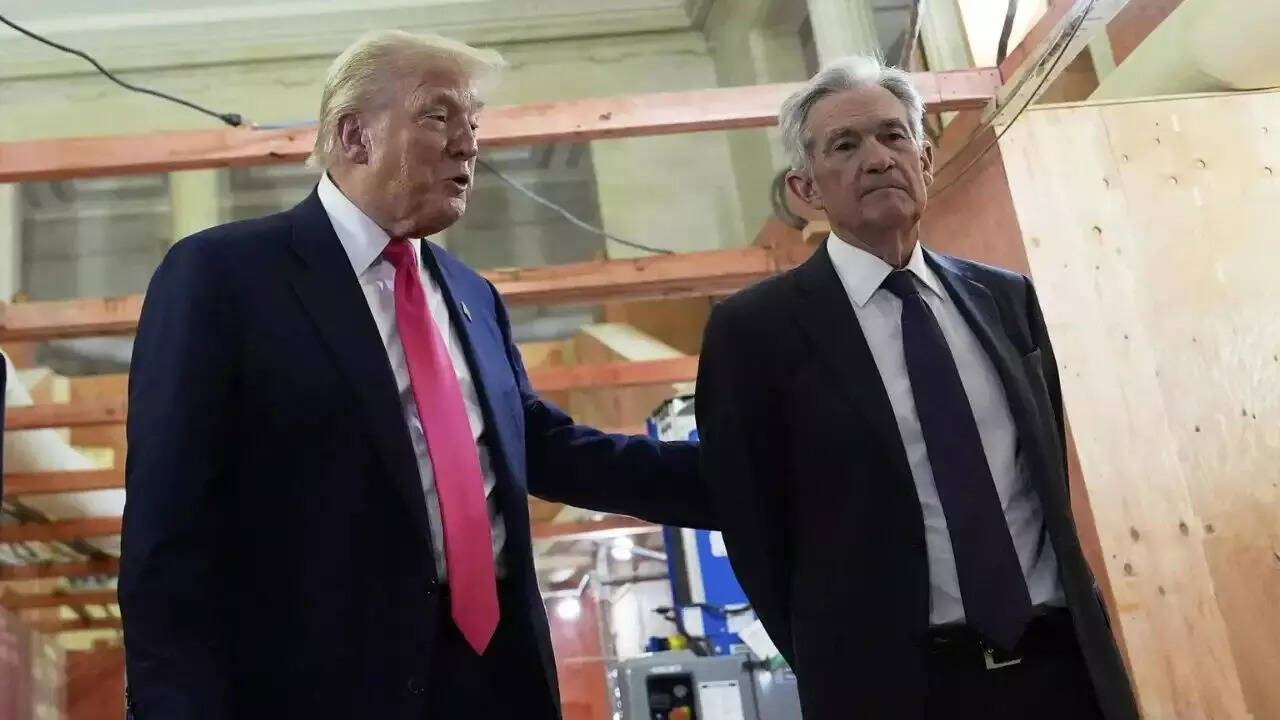Donald Trump has launched a scathing attack on Federal Reserve Chair Jerome Powell, criticizing his handling of interest rates and the escalating costs of the Fed headquarters renovation. Trump accused Powell of incompetence and demanded immediate rate cuts to stimulate the economy.
Trump’s Fed Fury: A Brewing Storm Over Buildings and Bad Blood
Donald Trump, never one to mince words, has unleashed a fresh wave of criticism against Jerome Powell, the Federal Reserve Chair he initially appointed. This time, however, the barbs extend beyond monetary policy and delve into…architecture? Yes, you read that right. The former president is apparently deeply unhappy with the design and construction of a new Federal Reserve building, adding fuel to an already fiery relationship with Powell.
Forget interest rates and inflation targets for a moment; Trump’s latest grievance centers on what he perceives as an aesthetic and functional disaster. He hasn’t shied away from labeling the project “horrible” and a product of “grossly incompetent” management. While the specific details of his architectural critique remain somewhat vague, his overall sentiment is crystal clear: he believes the building is a monument to poor decision-making. It certainly raises an eyebrow: is this genuine concern for taxpayer money or a strategic dig aimed at further discrediting Powell?
But here’s where things get even more interesting. Buried within the tirade, Trump hinted at the possibility of legal action related to the Fed building’s construction. While he stopped short of explicitly stating who he would sue or on what grounds, the implication is that he believes there may have been mismanagement, potential corruption, or simply egregious errors that warrant a legal challenge. This is a significant escalation, moving beyond mere verbal attacks into the realm of potential legal battles. What evidence does Trump possess to justify such a drastic step? The public, and perhaps soon the courts, await answers.

The timing of this outburst is also noteworthy. With the presidential election looming, Trump’s pronouncements carry extra weight. Is he trying to sway public opinion regarding the Fed’s leadership? Is he positioning himself to potentially replace Powell if he wins another term? Or is he genuinely just frustrated with the design of a building? The answer, as with many things involving Trump, is likely a complex mix of all three.
The Powell-Trump Dynamic: A Rocky History
It’s no secret that Trump and Powell have had a strained relationship since the former appointed the latter to lead the Fed. Trump repeatedly criticized Powell’s interest rate policies during his presidency, arguing that they were hindering economic growth. This public pressure on the Fed, an institution traditionally meant to operate independently, was unprecedented. He seemed to believe that lower interest rates were the key to faster growth and repeatedly voiced his displeasure when the Fed raised rates.
Powell, for his part, largely resisted Trump’s pressure, maintaining that the Fed’s decisions were based on economic data and the long-term health of the economy. This created a constant tension, with Trump often publicly questioning Powell’s competence and even considering firing him, a move that would have triggered a major financial crisis. This public battle of wills played out on the world stage, creating uncertainty in the markets and raising questions about the Fed’s independence. This Fed building brouhaha, therefore, is simply the latest chapter in a long and turbulent saga. Perhaps it’s time to revisit the history of the Federal Reserve’s independence to better understand the context of these ongoing tensions.
Implications and Future Speculation
What does all this mean for the future? Several possibilities emerge. First, it could signal a renewed focus on the Fed’s independence in the upcoming election. Trump’s attacks may galvanize support for preserving the Fed’s autonomy, or they could embolden those who believe the Fed needs greater political oversight. Second, it raises questions about Powell’s future. If Trump were to win the presidency again, it’s highly unlikely that Powell would remain as Fed Chair for long. This uncertainty could create volatility in the markets as investors try to anticipate the changes.
Finally, the threat of a lawsuit, however vague, adds a layer of complexity to the situation. Even if the suit never materializes, the mere suggestion could damage the Fed’s reputation and raise doubts about the integrity of its operations. The architectural criticisms, however superficial they may seem, strike at a deeper concern: accountability.
In conclusion, Trump’s latest salvo against Powell, encompassing both monetary policy and building design, underscores the complex and often contentious relationship between politics and central banking. Whether this is a calculated political move, a genuine concern for fiscal responsibility, or simply an expression of Trump’s personal taste remains to be seen. One thing is certain: this feud is far from over, and its consequences could ripple through the economy and the upcoming election.







